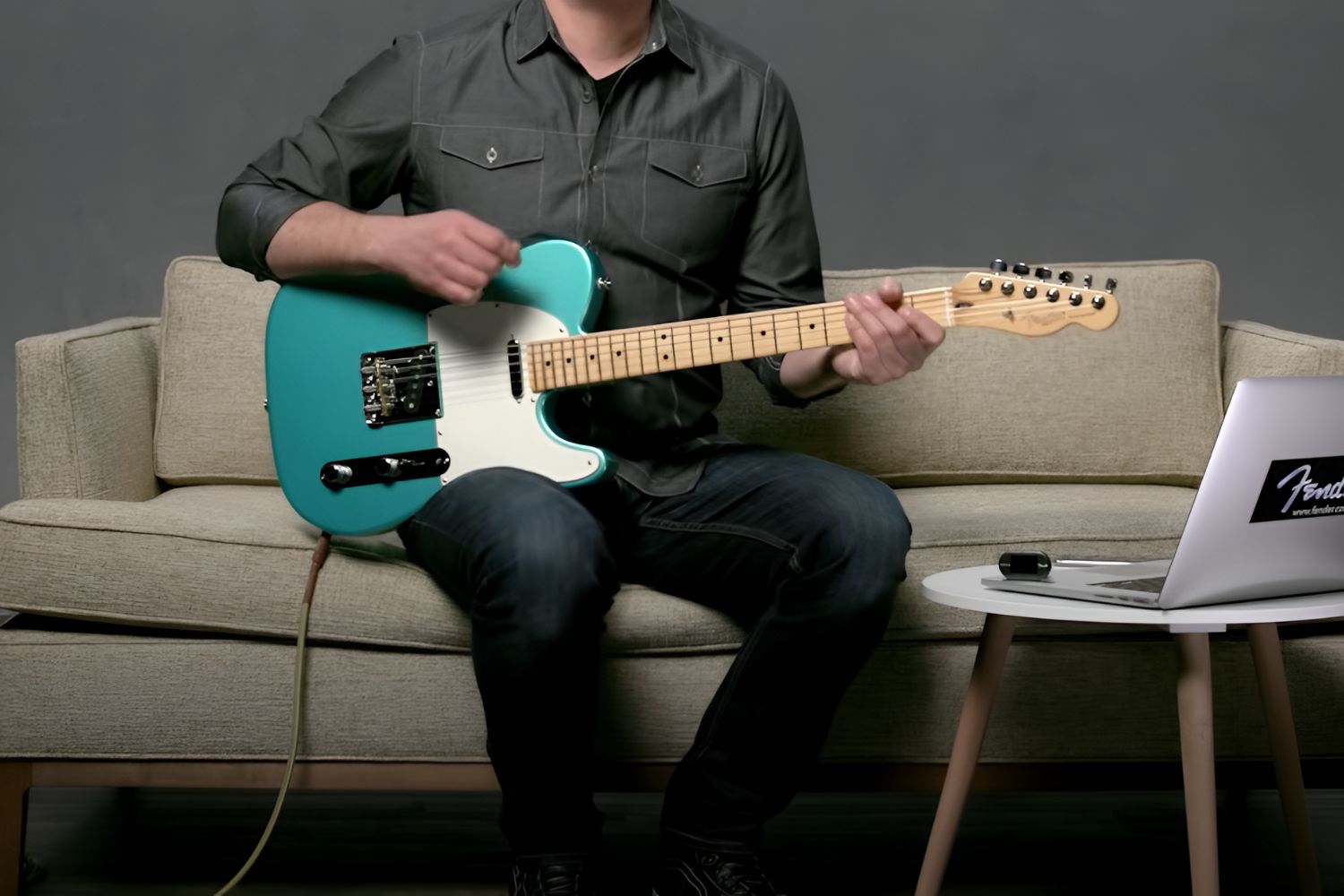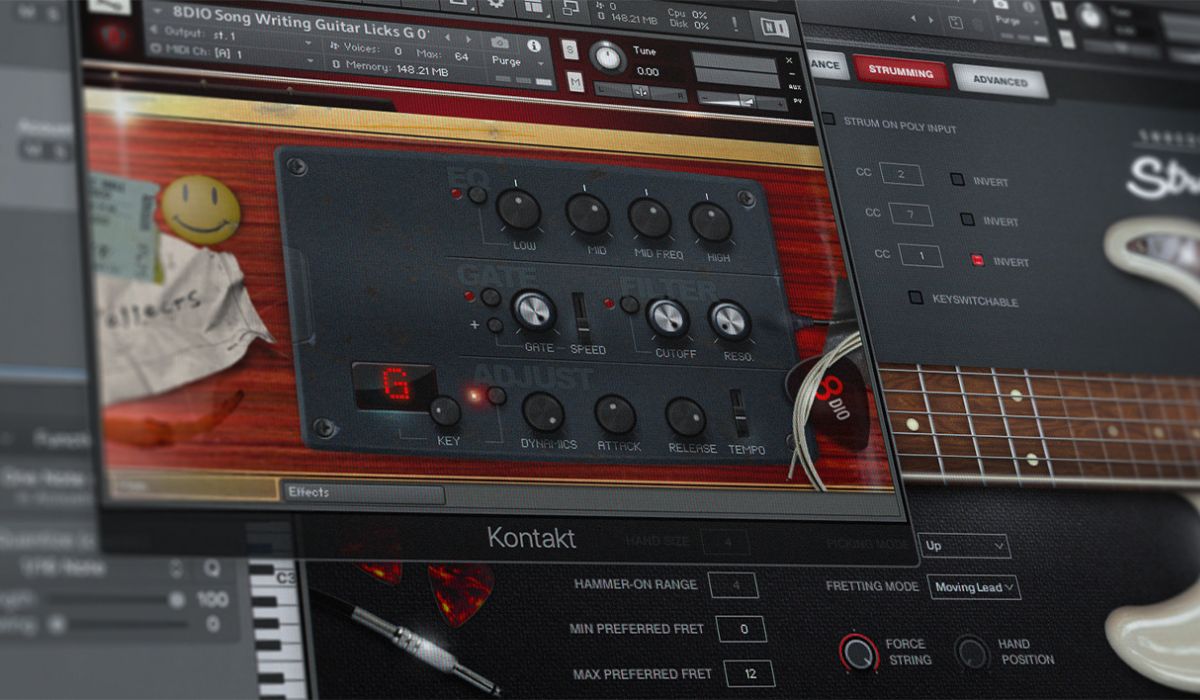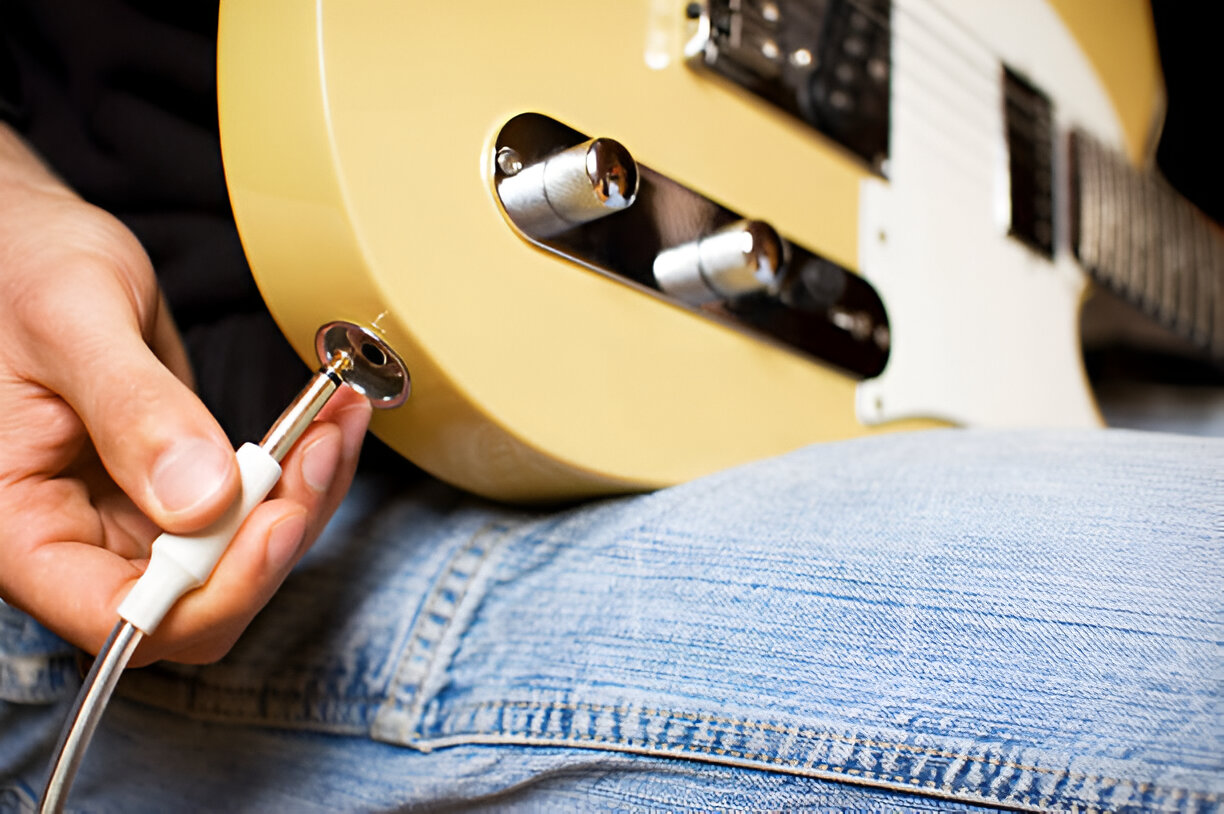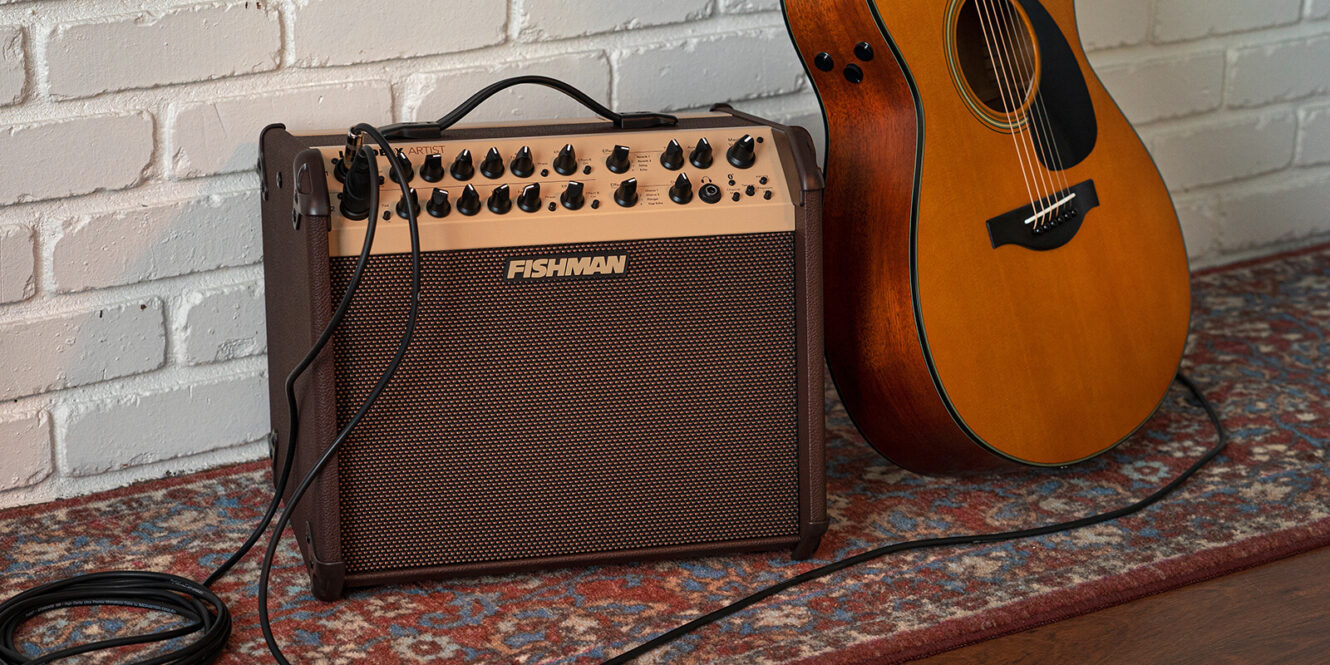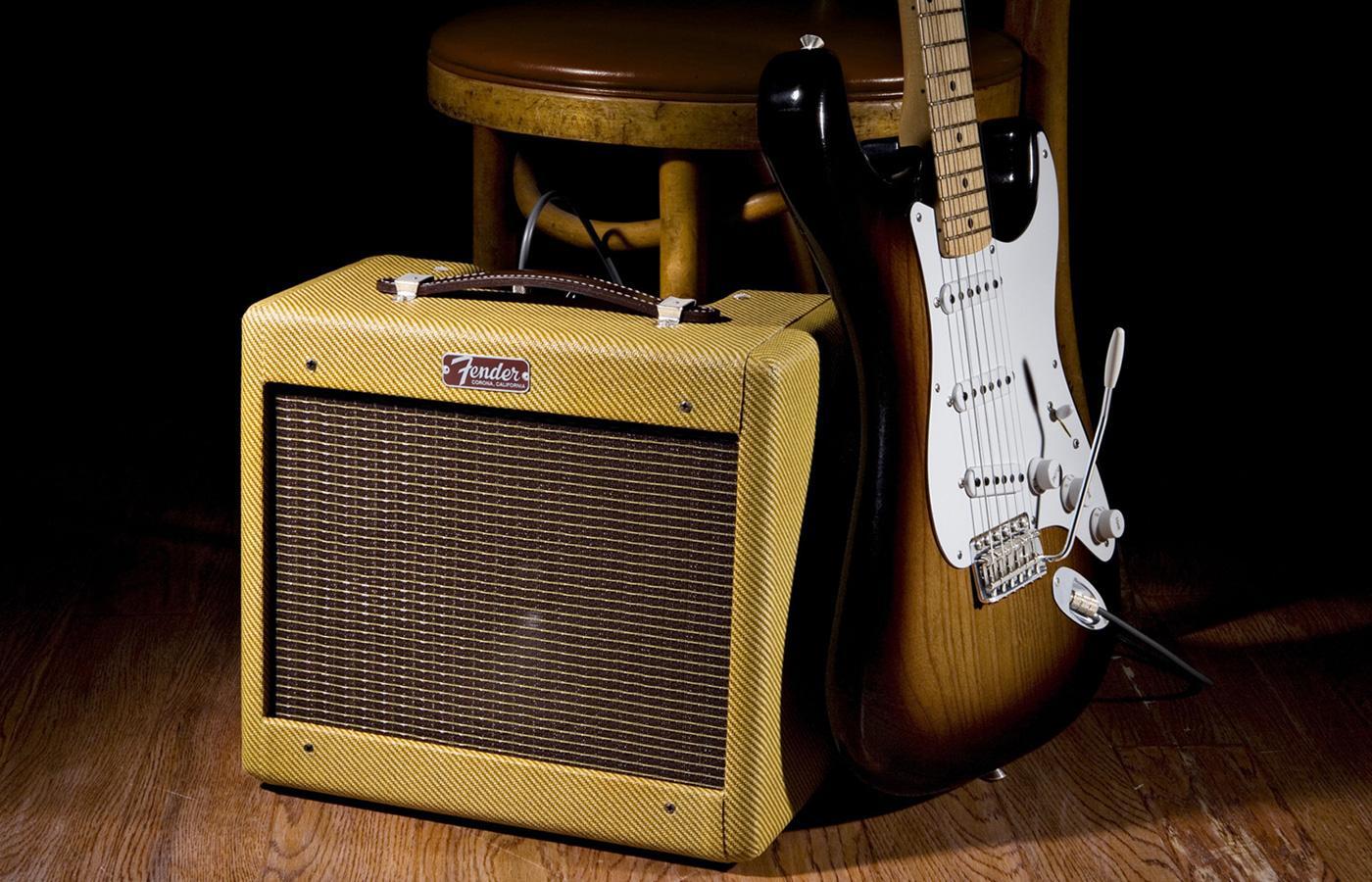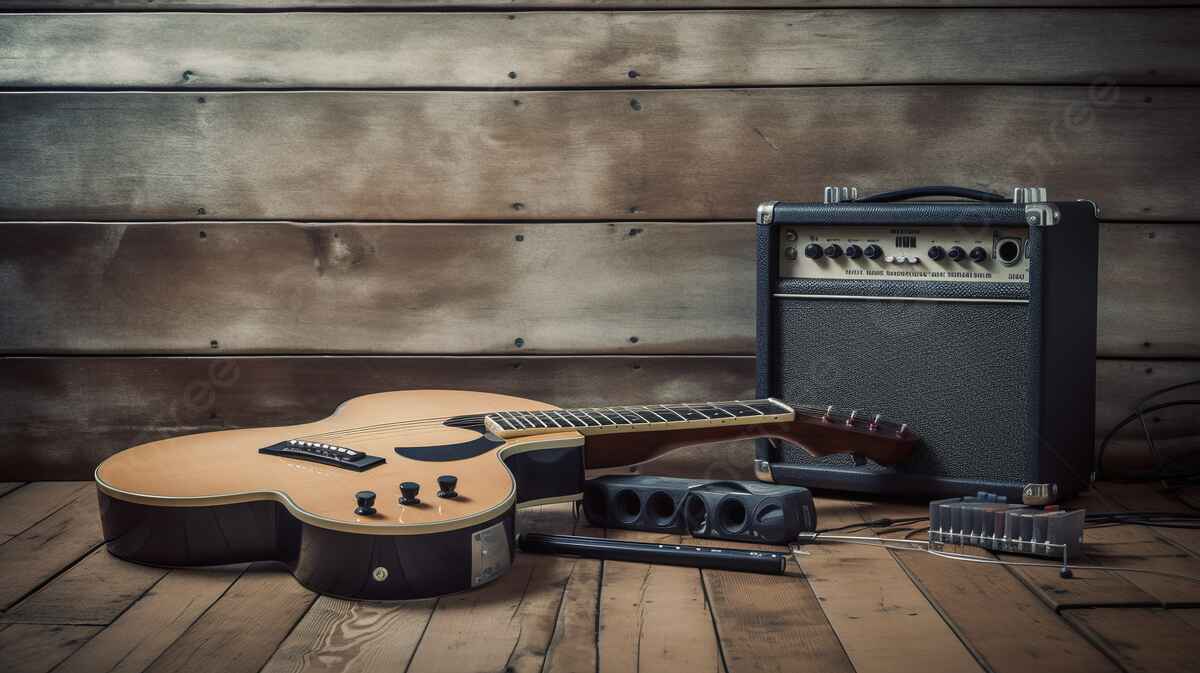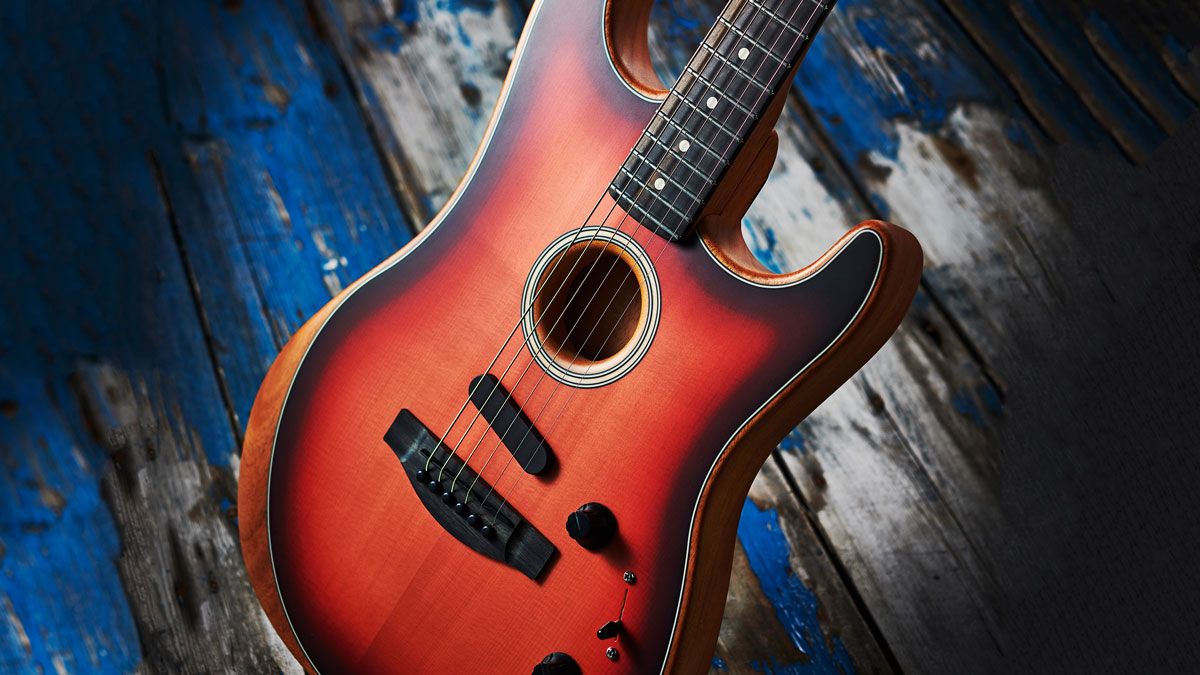Introduction
Tuning an electric guitar without an amp is a fundamental skill that every guitarist should master. Whether you're a seasoned musician or just starting your musical journey, understanding how to tune your instrument correctly is crucial for producing the best sound possible. While tuning with an amp provides instant auditory feedback, there are times when an amp may not be available or practical. In such situations, having the ability to tune your electric guitar without an amp becomes invaluable.
Tuning your electric guitar without an amp is not as daunting as it may seem. With the right techniques and tools at your disposal, you can achieve accurate tuning and maintain the desired pitch across all strings. In this guide, we will explore various methods for tuning an electric guitar without an amp, providing you with the knowledge and confidence to keep your instrument perfectly tuned in any situation.
Understanding the basics of guitar tuning and familiarizing yourself with different tuning methods will empower you to achieve optimal sound quality and playability. Whether you're performing on stage, practicing in a quiet setting, or simply jamming with friends, having a well-tuned electric guitar will elevate your musical experience. Let's delve into the world of electric guitar tuning and equip ourselves with the essential knowledge and skills to ensure that our instruments are always in tune and ready to rock.
Understanding Guitar Tuning
Before delving into the various methods of tuning an electric guitar without an amp, it’s essential to understand the basics of guitar tuning. The standard tuning for a six-string electric guitar, from the lowest pitch to the highest, is EADGBE. Each letter represents the open pitch of the corresponding string when strummed without pressing down any frets. This standard tuning provides a balanced and versatile starting point for playing a wide range of musical styles.
It’s important to note that maintaining proper tuning is crucial for achieving the desired sound and ensuring that chords and notes resonate harmoniously. When a guitar is out of tune, even the most skillful playing can sound off-key and lackluster. Therefore, familiarizing yourself with the pitch of each string and how they relate to one another is fundamental to the tuning process.
Furthermore, understanding the concept of intervals between strings is key to grasping the fundamentals of guitar tuning. The standard tuning intervals between adjacent strings are fourths, except for the interval between the third (G) and second (B) strings, which is a major third. This knowledge is invaluable when adjusting the pitch of each string to achieve accurate tuning across the entire instrument.
Lastly, being able to identify when a string is in tune by ear is a valuable skill that every guitarist should cultivate. While electronic tuners provide precise measurements, developing a keen ear for pitch will enable you to make quick adjustments on the fly, especially in situations where a tuner is not readily available.
By comprehending the basics of guitar tuning, including standard string pitches, intervals, and ear training, you will lay a solid foundation for mastering the art of tuning an electric guitar without an amp.
Tuning Methods
When it comes to tuning an electric guitar without an amp, several methods can be employed to ensure accurate pitch across all strings. Whether you’re in a noisy environment, away from your amplifier, or simply prefer to tune without auditory feedback, these methods will serve you well in various situations.
One of the most popular and reliable methods is using an electronic tuner. Electronic tuners provide precise visual feedback, indicating whether a string is tuned to the correct pitch. Simply pluck each string individually and adjust the tuning pegs until the tuner displays the desired note. This method is especially useful for beginners and experienced guitarists alike, as it offers accuracy and ease of use.
Another effective method for tuning an electric guitar without an amp is using harmonics. By lightly touching the string at the 5th, 7th, or 12th fret and plucking it, you can produce a harmonic tone. When the harmonic is in tune, it will produce a clear, bell-like sound. This technique allows you to tune the guitar by comparing the harmonic tones of different strings, ensuring that they are in harmony with each other.
If an electronic tuner is unavailable, utilizing a piano or an online tuner can also facilitate accurate guitar tuning. By matching the pitch of each string to the corresponding note on a piano or an online tuner, you can achieve precise tuning without the need for an amp. This method is particularly valuable in situations where electronic devices are not accessible, providing a reliable alternative for achieving optimal pitch.
By familiarizing yourself with these various tuning methods, you will be well-equipped to keep your electric guitar in tune without the need for an amp, regardless of the circumstances. Whether you prefer the convenience of an electronic tuner, the harmonic method, or utilizing a piano or online tuner, mastering these techniques will ensure that your instrument consistently produces the desired sound.
Using a Tuner
Using an electronic tuner is one of the most precise and straightforward methods for tuning an electric guitar without an amp. Electronic tuners are available in various forms, including pedal tuners, clip-on tuners, and smartphone apps, making them easily accessible for guitarists of all levels. Whether you’re a beginner or an experienced musician, utilizing a tuner ensures accurate tuning and helps maintain the integrity of your instrument’s sound.
To tune your electric guitar using an electronic tuner, start by turning on the device and selecting the standard tuning notes for each string: EADGBE. Pluck each string individually and observe the tuner’s display, which will indicate whether the pitch is too high, too low, or in tune. Adjust the tuning pegs accordingly, striving to match the displayed pitch for each string to achieve optimal tuning.
Electronic tuners provide visual feedback, typically using a needle, LED lights, or a digital display to show the pitch of the plucked string. Some advanced tuners also indicate the string’s pitch in cents, allowing for precise adjustments to achieve perfect tuning. As you fine-tune each string, pay attention to the tuner’s feedback and strive to keep the pitch within the designated range for each note.
One of the advantages of using an electronic tuner is its accuracy, which ensures that your electric guitar is tuned to the standard pitches, even in noisy environments where auditory feedback may be compromised. Additionally, electronic tuners are portable and can be used discreetly, making them ideal for tuning your guitar on the go or in settings where using an amp is not feasible.
By incorporating an electronic tuner into your guitar routine, you can cultivate a precise ear for pitch and develop a deeper understanding of the instrument’s tuning nuances. Whether you’re practicing at home, performing on stage, or jamming with friends, the ability to tune your electric guitar with confidence using an electronic tuner is an invaluable skill that will enhance your musical experience.
Using Harmonics
Utilizing harmonics is a popular and effective method for tuning an electric guitar without the need for an amp or electronic tuner. Harmonics are produced by lightly touching the string at specific frets and plucking it to create a bell-like tone. This technique allows guitarists to compare the harmonic tones of different strings and adjust their tuning to achieve harmonious resonance across the instrument.
To tune your electric guitar using harmonics, start by producing a harmonic tone at the 5th or 7th fret of the low E (6th) string. Pluck the string while lightly resting your finger over the fret, creating the harmonic tone. Next, produce a harmonic at the 7th fret of the A (5th) string and compare the two tones. Adjust the tuning peg of the A string until the harmonic pitch matches that of the low E string’s harmonic tone.
Continue this process by producing harmonics at the 5th fret of the A string and the 7th fret of the D (4th) string, and so on, until you reach the high E (1st) string. By comparing and adjusting the harmonic tones of each string, you can ensure that the intervals between the strings are in harmony, resulting in accurate tuning across the entire instrument.
Using harmonics for tuning offers several advantages, including the ability to fine-tune the instrument by ear and develop a deeper understanding of the guitar’s tonal relationships. This method also promotes ear training, as it requires attentive listening to discern the subtle differences in pitch between the harmonic tones of adjacent strings.
Furthermore, the harmonic method is particularly useful in situations where an electronic tuner is unavailable or impractical. Whether you’re practicing in a quiet setting, jamming with friends, or performing in a venue with ambient noise, the harmonic method provides a reliable and effective approach to tuning your electric guitar without the need for amplification.
By mastering the technique of using harmonics for tuning, you can enhance your musical proficiency, develop a keen ear for pitch, and ensure that your electric guitar consistently produces the desired sound, regardless of the tuning method employed.
Using a Piano or Online Tuner
When an electronic tuner is not readily available, utilizing a piano or an online tuner provides a reliable alternative for tuning an electric guitar without an amp. Both methods offer visual or auditory reference pitches that enable guitarists to match the strings’ pitches to achieve accurate tuning, making them valuable tools in various musical settings.
If you have access to a piano, you can use it as a reference for tuning your electric guitar. Start by identifying the standard tuning notes for each string: EADGBE. Pluck each string individually and compare its pitch to the corresponding note on the piano. Adjust the tuning pegs until the string’s pitch matches the piano note, ensuring that the guitar is tuned to the desired standard pitches.
Similarly, online tuners are easily accessible through websites or smartphone apps, providing visual or auditory cues for achieving accurate guitar tuning. By selecting the standard tuning notes for each string, you can pluck the strings individually and compare their pitches to the reference tones provided by the online tuner. Make adjustments to the tuning pegs until the strings are tuned to the correct pitches, aligning with the visual or auditory feedback from the online tuner.
Using a piano or an online tuner for guitar tuning offers several advantages, particularly in situations where an electronic tuner or amp is not available. These methods provide a reliable reference for achieving accurate pitch, allowing guitarists to maintain the integrity of their instrument’s sound without the need for specialized equipment.
Additionally, utilizing a piano or an online tuner fosters a deeper understanding of pitch relationships and intervals, enhancing a guitarist’s ear for tuning and musical nuances. This method also promotes adaptability, as it empowers musicians to tune their electric guitars in diverse settings, whether at home, in a studio, or on the go.
By incorporating the use of a piano or an online tuner into your guitar tuning routine, you can develop a keen sense of pitch, refine your tuning accuracy, and ensure that your electric guitar consistently produces the desired sound, regardless of the tuning method employed.
Conclusion
Mastering the art of tuning an electric guitar without an amp is an essential skill that empowers guitarists to maintain optimal sound quality and playability in diverse musical environments. Understanding the basics of guitar tuning, including standard string pitches and intervals, lays a solid foundation for achieving accurate tuning across the instrument.
Exploring various tuning methods, such as using an electronic tuner, harmonics, and referencing a piano or online tuner, equips guitarists with the knowledge and flexibility to tune their instruments effectively in any situation. Each method offers distinct advantages, from precision and ease of use with electronic tuners to ear training and adaptability with harmonics and alternative reference sources.
By incorporating these tuning methods into your guitar routine, you can cultivate a precise ear for pitch, develop a deeper understanding of the instrument’s tonal relationships, and ensure that your electric guitar consistently produces the desired sound. Whether you’re practicing at home, performing on stage, or jamming with friends, the ability to tune your electric guitar with confidence without the need for an amp enhances your musical experience and proficiency.
Ultimately, the knowledge and skills gained from mastering the art of tuning an electric guitar without an amp empower guitarists to elevate their musical expression and creativity, ensuring that their instruments are always in tune and ready to rock.







